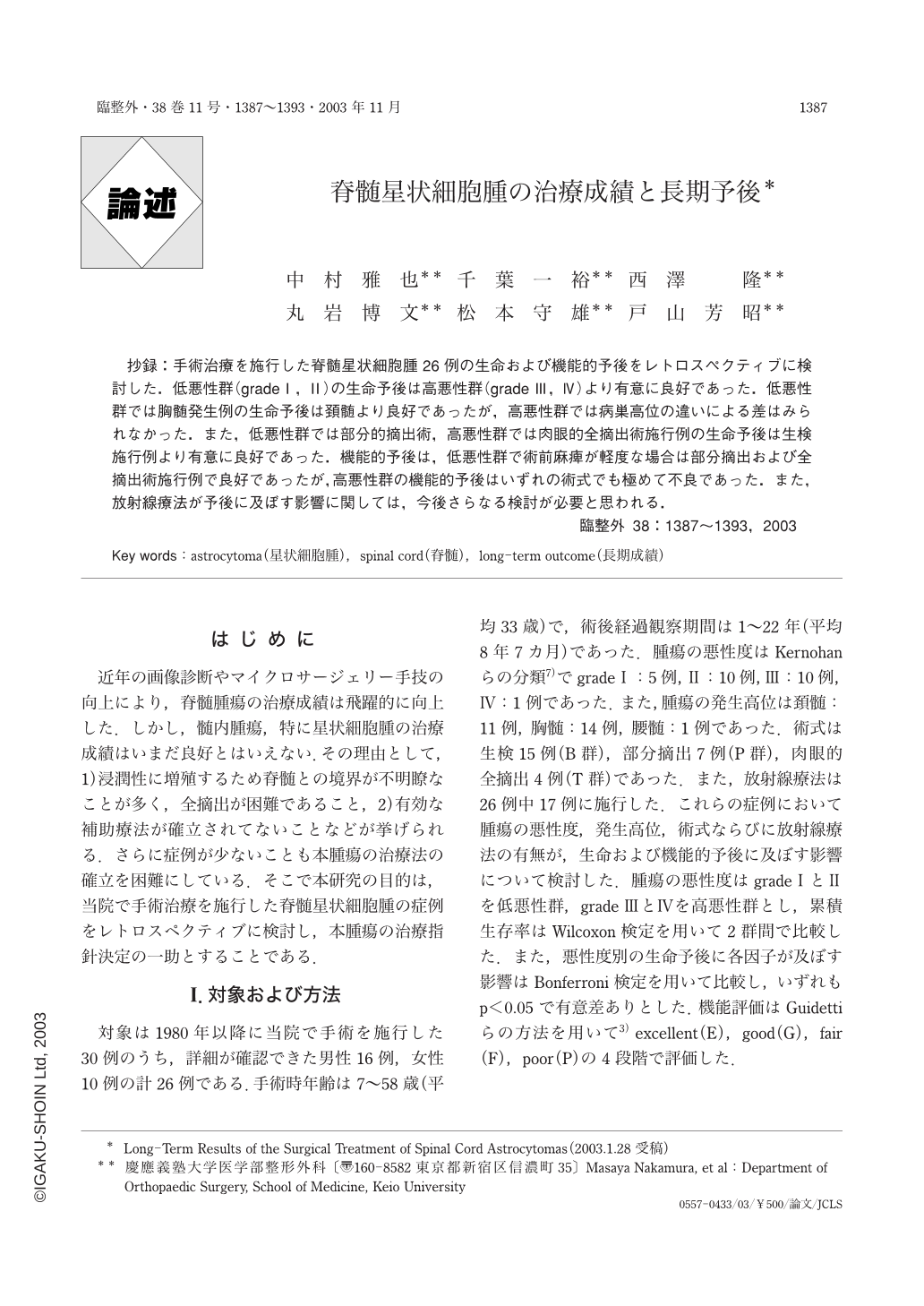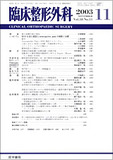Japanese
English
- 有料閲覧
- Abstract 文献概要
- 1ページ目 Look Inside
抄録:手術治療を施行した脊髄星状細胞腫26例の生命および機能的予後をレトロスペクティブに検討した.低悪性群(grade Ⅰ,Ⅱ)の生命予後は高悪性群(grade Ⅲ,Ⅳ)より有意に良好であった.低悪性群では胸髄発生例の生命予後は頚髄より良好であったが,高悪性群では病巣高位の違いによる差はみられなかった.また,低悪性群では部分的摘出術,高悪性群では肉眼的全摘出術施行例の生命予後は生検施行例より有意に良好であった.機能的予後は,低悪性群で術前麻痺が軽度な場合は部分摘出および全摘出術施行例で良好であったが,高悪性群の機能的予後はいずれの術式でも極めて不良であった.また,放射線療法が予後に及ぼす影響に関しては,今後さらなる検討が必要と思われる.
Spinal cord astrocytomas are rare neoplasms, and optimal treatment guidelines have never been established. This study reviewed the clinical findings of 26 patients with spinal cord astrocytomas treated at Keio University Hospital between 1980 and 2000. The mean age of the patients was 33 years;16 were male, and 10 were female. 15 patients had high-grade tumors, and 11 had high-grade tumors. The surgical procedure consisted of total excision in 4 patients, partial excision in 7, and biopsy in 15 patients. The 5-year survival rate of the patients with low-grade tumors was 80% as opposed to 20% among the patients with high-grade tumors. 19 patients died, 12 of respiratory failure, 5 of sepsis after chronic infection, and two of unknown causes. Tumor grade was a significant prognostic factor for overall survival. In the patients with low-grade tumors the extent of resection correlated significantly with survival, and good motor function was retained when surgery was carried out before significant neurological deterioration. Total resection yielded a slightly better outcome in the patients with high-grade tumors, but both survival and functional outcome remained poor in this group. The efficacy of postoperative radiotherapy has yet to be determined and requires further study.

Copyright © 2003, Igaku-Shoin Ltd. All rights reserved.


